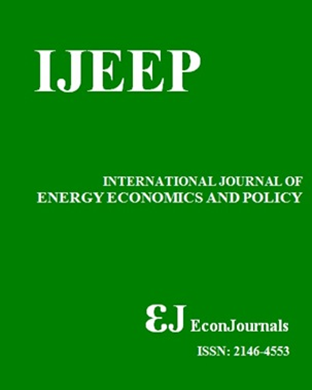Drivers of China Green Bonds: An ARDL Analysis of Economic Policy Uncertainty, Financial Market Volatility, Exchange Rates, and Commodity Prices
DOI:
https://doi.org/10.32479/ijeep.19188Keywords:
Green Bond, Economic Policy Uncertainty, Global Financial Volatility, Exchange Rate, Commodity Prices, ARDL, ChinaAbstract
Understanding the impact of macroeconomic variables on China’s green bond market is crucial for developing effective policies and strategies that promote sustainable finance. This study examines the influence of economic policy uncertainty, financial market volatility, exchange rates, and commodity prices on green bond prices in China in the long- and short term. Using the Autoregressive Distributed Lag (ARDL) model for monthly data spanning January 2019-December 2023, the study indicates that China’s economic policy uncertainty significantly negatively impacts green bond prices in both the short and long term. In contrast, global financial market volatility and exchange rate have positive and significant long-term effects on green bonds, reinforcing their role as a stabilising asset during economic uncertainty. Meanwhile, nickel and copper prices negatively affect green bonds in the short term but show positive or neutral long-term effects. By contrast, oil prices positively impact green bonds in the short term, driven by heightened awareness of energy transition needs, but their influence diminishes in the long term. These findings provide necessary insights for policymakers and investors in strengthening the green bond market through stable economic policies and strategic investment decisions.Downloads
Downloads
Published
2025-06-25
How to Cite
Darsono, S. N. A. C., Bi, C., Mutiara, I., Kurniawan, M. L. A., Pho, T. V., & Nguyen, T. T. H. (2025). Drivers of China Green Bonds: An ARDL Analysis of Economic Policy Uncertainty, Financial Market Volatility, Exchange Rates, and Commodity Prices. International Journal of Energy Economics and Policy, 15(4), 178–188. https://doi.org/10.32479/ijeep.19188
Issue
Section
Articles




